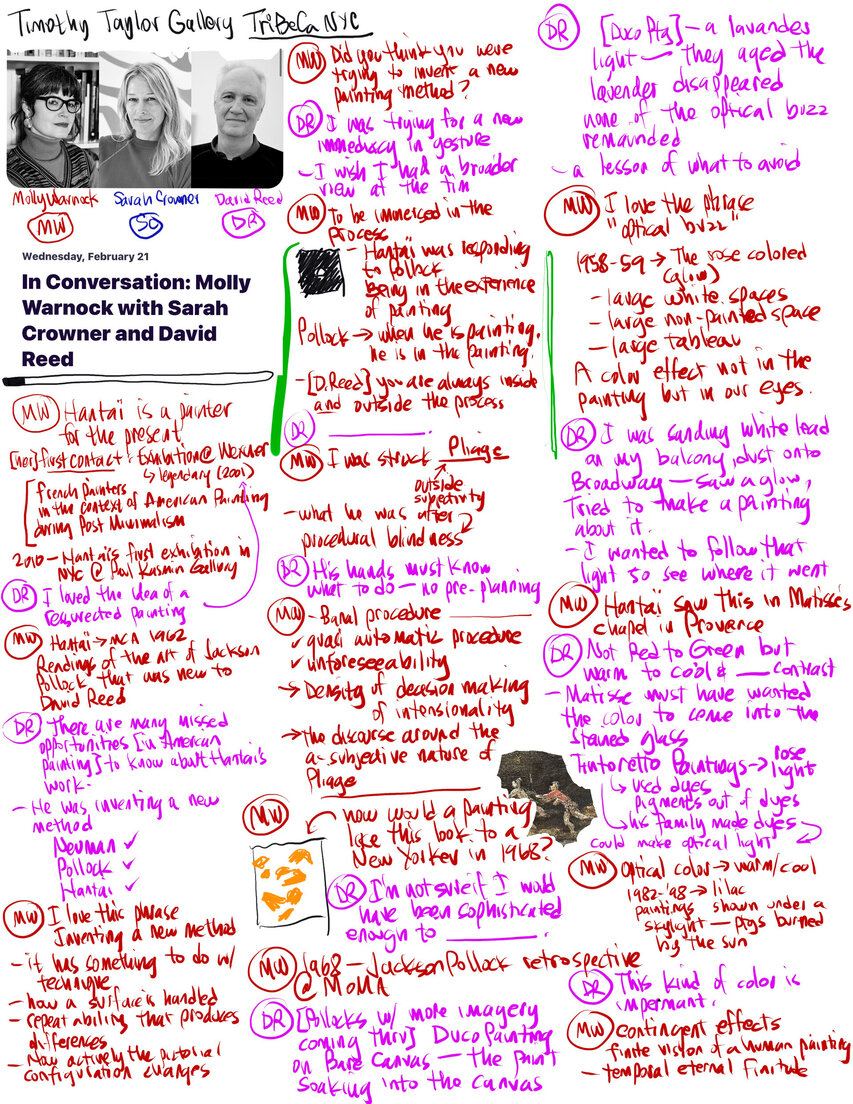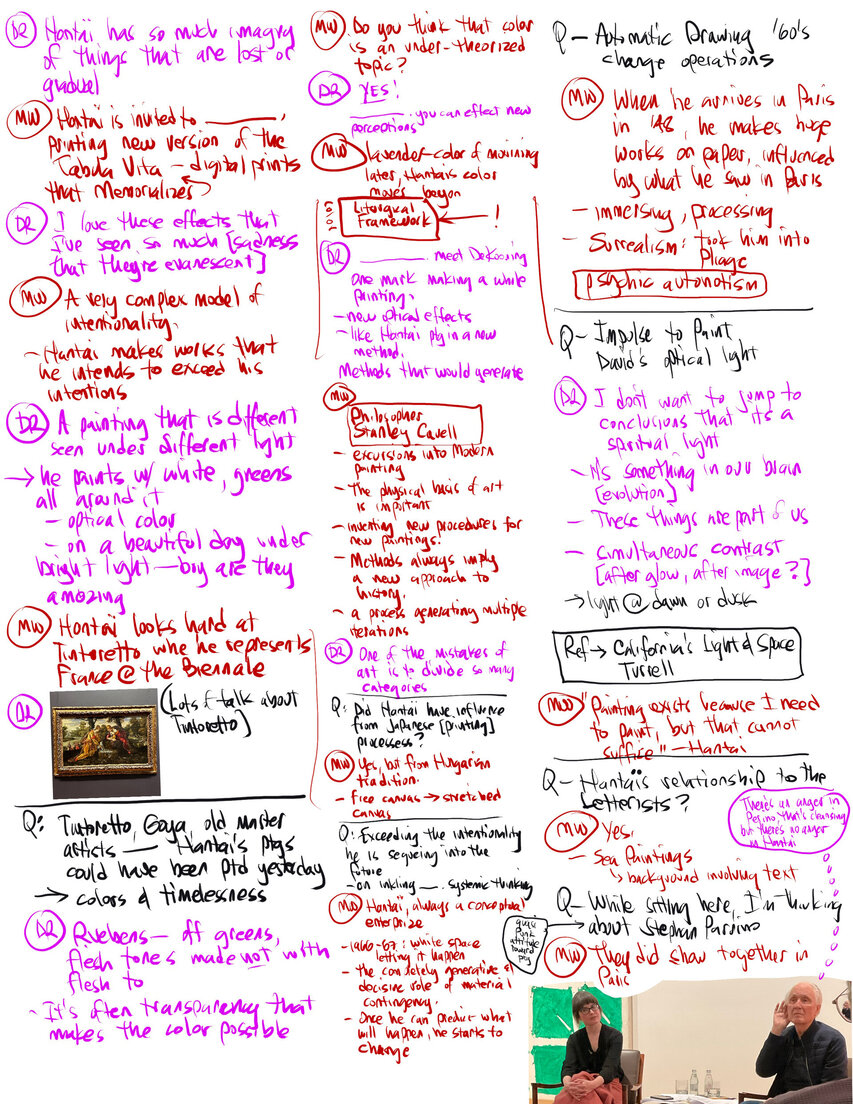February 22, 2024
Panel Discussion: Hantaï at Timothy Taylor Gallery
A few thoughts after the event:
First of all, it was delightful to have two heavyweights, one a historian of contemporary art and an esteemed New York painter, possessing his own unique pictorial language and a powerful oeuvre. The audience was full of smart talented artists.
Two topics were dominant in the room that night. Warnock dealt out the allover card and Reed, the color card. Via the allover, Warnock connected Hantaï to Pollock's drip painting* (via Neuman's zip painting, extending the lineage). She is known for her expertise in European painting but there's an interesting line item in her bio that goes like this: "...Director of the Clyfford Still Catalogue Raisonné Project at the Clyfford Still Museum in Denver, Colorado". So, she's steeped in the high water mark of New York Abstraction of the 50's and 60's.
Listening to Warnock's introduction, my impression was that issues of materiality and scale is the thrust of her concerns. Flipping through books on Hantaï (Warnock had just published one recently), black and white photographs of Hantaï in the studio are quite impressive. Evidently, Hantaï found studios in abandoned factories, the scale of canvas measure ten, twenty, thirty feet it seems, covering crumbling walls and floors. This was the post war era when populations were migrating from cities to suburbs, factories were retooling for peacetime, immense spaces were available to artists for the first time in history. This, coinciding with the emerging market booming consumer economy and the technological acceleration due to wartime innovation, you have the three significant drivers for post war abstract art.
As an artist who is heavily invested in letting materiality drive painting, the medium long since declared defunct and dead after the Pop/Minimalist/Conceptualist/Postmodernist carried forward Duchamp's Telegram (wink, de Duve, his new book that I'm currently reading), I was delighted to hear Warnock call for a new push for painting that focused on materiality. The thing is, such a project has to be cautious and mindful of what had happened in the long meantime.
Color was the other theme of the night. Reed talked about optical color, that color not in the world but in the retina or cerebral cortex. Or, maybe it's in the world but it's fugitive... Reed lamented that Pollock's use of Duco paint rendered a lovely lavender light that disappeared after the painting aged out. The words "optical color" resonated in the audience and subsequent discussion prompted me to reflect on California's Light and Space movement, James Turell and Robert Irwin specifically. Strange to hear New Yorkers lilt so many years after that era.
Yes, a very nice evening. Warnock, launching salvos like "...contingent effect... the finite vision of a human painting... the temporal eternal finitude..." and Reed, delicately savoring color, speaking of Tintoretto and Rubens.
*
*
*
NB: Regarding Pollock, I'm reading Carter Radcliff's book, a project commissioned by the Pollock/Krasner Foundation, apparently. You can read it here.
NG2: Coincidentally, I visited the Met's newly rennovated European Wing. It was delightful. Of the pics I snapped, Tintoretto caught my attention. Nice to hear Reed drop his name.



Leave a comment